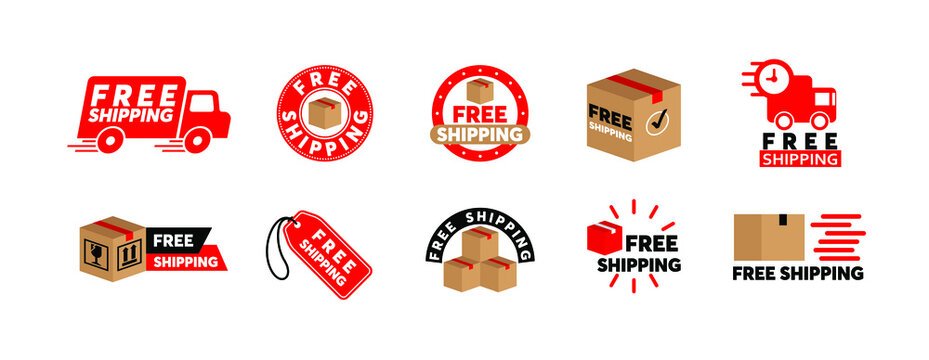Introduction
Shipping means transporting goods or products from one location to another. This includes various modes of transportation, such as by land (trucks, trains), sea (cargo ships), or air (airplanes). Shipping is a critical part of supply chain and logistics operations, ensuring that items reach their intended destinations, whether for commercial trade, ecommerce, or for personal delivery. There are many benefits of offering free shipping
It includes activities associated with packing, labeling, tracking, and managing the delivery of shipments to ensure they arrive safely and on time.In e-commerce, shipping guarantees prompt delivery raises consumer happiness, lowers cart abandonment, and increases the development and competitiveness of businesses. When we offer free shipping service to our customers it helps to boost our sales.
Concept of free shipping
Offering free shipping is a common tactic employed by eCommerce companies to draw in and keep clients. Businesses may increase consumer happiness, decrease shopping cart abandonment, and make their items more enticing by doing away with delivery expenses. Free shipping is a crucial tool for modern businesses since it may boost average order values, create bigger sales volumes, and give them a competitive edge in the congested online industry.The major benefit of offering free shipping is to gain the customer’s trust and build strong relation with them.

Types of shipping
There are several types of shipping, each suited for different needs and circumstances:
Standard Shipping: Typically the most cost-effective method, standard shipping involves regular delivery times and is often used for non-urgent deliveries.
Express Shipping: Faster than standard shipping, express shipping ensures quicker delivery times, often within 1-3 days. It is more expensive but is used for urgent deliveries.
Same-Day Shipping: As the name implies, this service delivers items on the same day the order is placed. It is typically available in metropolitan areas and is more costly.
Overnight Shipping: Ensures that the package is delivered the next day. This is ideal for urgent shipments that need to reach the recipient quickly.
Two-Day Shipping: Guarantees delivery within two business days. It is commonly used in e-commerce for a balance between speed and cost.
Freight Shipping: Used for large, heavy, or bulk items that are shipped via trucks, ships, or cargo planes. Freight shipping can be divided into less-than-truckload (LTL) and full truckload (FTL) depending on the volume of goods.
International Shipping: This involves shipping goods across international borders and includes customs clearance and various international regulations.
Drop shipping : A retail fulfillment method where the seller does not keep the products in stock. Instead, the seller purchases the item from a third party and has it shipped directly to the customer.
Eco-Friendly Shipping : Utilizes environmentally friendly practices, such as using recycled materials for packaging and choosing transportation methods that reduce carbon footprints.
White Glove Shipping : A premium service that includes careful handling, unpacking, and installation of high-value or fragile items.
Flat Rate Shipping : A method where the cost is determined by the size of the package rather than its weight or destination. It simplifies the pricing structure for both the seller and the buyer.
Partial Shipping : Involves sending parts of an order separately, which can be useful when certain items are backordered or out of stock.
Each type of shipping has its own advantages and is chosen based on factors like deliv ery speed, cost, and the nature of the items being shipped.

Benefits of offering free shipping
For eCommerce companies, providing free shipping has several advantages. It increases consumer happiness, draws in additional clients, and lowers the shopping cart abandonment rate. Offering free shipping can provide you a competitive edge, raise average order values, and enhance sales volumes of the store in a short time. Additionally, it fosters client loyalty and trust, which promotes recurring business and positive word-of-mouth and, in turn, boosts sales and company expansion.
Top 5 Benefits of Offering Free Shipping
Increased Sales-the first benefit
Customers are more likely to complete their purchases when there are no additional shipping costs, leading to higher sales volumes.
Reduced Cart Abandonment-the second benefit
Eliminating shipping fees decreases the chances of customers abandoning their shopping carts due to unexpected costs at checkout.
Enhanced Customer Satisfaction-the third benefit
Free shipping improves the overall shopping experience, making customers happier and more likely to return for future purchases.
Competitive Advantage-the fourth benefit
Offering free shipping can set a business apart from competitors who charge for shipping, attracting more customers to your store.
Boosted Customer Loyalty-the fifth benefit
Providing free shipping helps build trust and loyalty, encouraging repeat business and positive word-of-mouth recommendations.
Increased Sales and Conversion Rates
For eCommerce companies, providing free delivery may greatly increase sales and conversion rates. Customers are more likely to finish their purchase when they learn that delivery is free than to leave their cart empty because of unforeseen expenses. Free delivery eases the choice to buy by lowering the perceived risk and total cost of an item. This rise in conversions results in increased sales volumes and better profits for the company.
Conclusion
Offering free shipping brings multiple advantages to your eCommerce business. It not only drives more sales and reduces cart abandonment but also enhances customer satisfaction and loyalty. By providing a better shopping experience and standing out from competitors, you can attract more customers and build a loyal customer base. Embrace free shipping to boost your business and enjoy these substantial benefits.


1 thought on “Top 5 Benefits of offering free shipping”